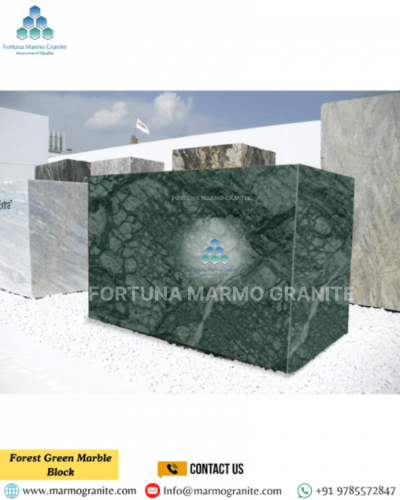Marble Blocks from India: Strength, Elegance, and Global Appeal
Marble Blocks from India Indian marble blocks are more than building materials. They are legacies carved from the earth, rooted in India's geological history and cultural pride. Quarried from Rajasthan, Gujarat, and Madhya Pradesh, these natural treasures showcase diverse colors, intricate veining, and timeless luster. From the creamy elegance of Makrana White to the soft tones of Banswara Purple and the earthy warmth of Rainforest Brown, each variety tells a story—a blend of centuries of natural formation and human artistry.
Expertly extracted and processed with modern technology, these marble blocks retain their natural strength and beauty. They meet the highest global standards of precision and finish. Today, Indian marble forms the cornerstone of luxury interiors, monumental architecture, and artisanal masterpieces. Its exports reach Europe, the Middle East, the United States, and beyond.
As sustainability and authenticity gain importance in construction and design, demand for ethically sourced, premium-quality stone rises. In this landscape, Indian marble remains a symbol of durability, heritage, and global sophistication.
A Spectrum of Elegance: The Beauty of Indian Marble
- The Pristine Whites: Perhaps the most famous is the Makrana marble, a pure white marble with a subtle luster, famously used in the construction of the Taj Mahal. Its fine grain and translucent quality allow light to penetrate slightly, giving it a luminous, ethereal glow. Other white varieties like Ambaji White and Katni White also offer varying degrees of purity and veining, ideal for creating bright, spacious, and sophisticated environments.
- The Verdant Greens: Indian green marble, often referred to as "Onyx Green" or "Forest Green," is another popular choice. With its vibrant green hues ranging from light to deep forest, often interspersed with intricate white or brown veins, it brings a touch of nature's serenity indoors. This marble is particularly favored for accent walls, countertops, and decorative elements, adding a bold yet elegant statement.
- The Earthy Beiges and Pinks: Varieties like Jaisalmer Yellow and Udaipur Pink offer warmer tones, reminiscent of desert landscapes and vibrant sunsets. These marbles, with their unique veining and subtle variations in color, lend themselves beautifully to both traditional and contemporary designs, creating inviting and cozy atmospheres.
From Quarries to Global Markets: The Journey of Indian Marble Blocks
In addition, The journey of Indian marble from quarries to global architecture showcases precision. craftsmanship, and innovation. It begins with detailed geological surveys to locate the finest marble deposits. Once identified, workers set up quarries and extract massive marble blocks. using advanced tools like diamond wire saws. These saws reduce waste and ensure accurate cuts.
Moreover, Next, the heavy blocks move to processing units for transformation. Workers cut them into slabs using gang saws or multi-blade machines. depending on the required size and thickness. Polishing follows, enhancing the marble's natural color, texture. and shine with progressively finer abrasives. To meet diverse design preferences, craftsmen. may also apply finishes such as honing, sandblasting, or tumbling. giving the stone matte, textured, or antique effects.
Indian marble blocks enjoy worldwide popularity for their quality, variety, and value. Modern quarrying and processing techniques ensure they meet global standards in durability, finish, and consistency. Competitive pricing makes them a preferred choice for architects, designers, and builders.
Consequently, From luxury hotels in Dubai to homes in London and offices in New York, people use Indian marble for flooring, countertops, wall cladding, and sculptures. Each installation highlights the stone's strength, timeless elegance, and India's rich heritage of craftsmanship.
Sustainable Practices and the Future of Indian Marble
- With the rising global demand for natural stone. the Indian marble industry is steadily adopting sustainable and eco-friendly practices. Today, modern quarrying methods reduce waste, while experts carefully restore disused quarry sites. At the same time, innovations in water recycling. and dust control lower the environmental impact of marble processing. Looking ahead, the future of Indian marble looks brighter than ever.
- Ongoing investments in research and development create new finishes. and design possibilities, making marble even more versatile. By emphasizing ethical sourcing and responsible practices. India's marble industry strengthens its global reputation. This commitment ensures that the timeless beauty of Indian marble. continues to grace structures and inspire generations for years to come.
Conclusion
In conclusion, Marble blocks from India are more than raw materials; they form the foundation of artistic grandeur, architectural legacy, and lasting strength. Extracted from India's rich, ancient quarries, these blocks combine natural beauty with remarkable durability. From the pristine white of Makrana to the rich textures of Banswara, Udaipur, and Rajnagar, each block tells a story of geological wonder and aesthetic brilliance.
Moreover, Their versatility allows them to become grand staircases, luxury floors, ornate sculptures, or striking feature walls. Indian marble has earned global trust for both traditional and contemporary projects. Its elegant veining, long-lasting surface, and timeless appeal elevate any space into a masterpiece.
This global appeal is further reinforced by suppliers who bring expertise, quality control, and customer-focused service to the forefront. Among these, Fortuna Marmo Granite has carved a distinguished name in the international stone industry. With deep-rooted knowledge, ethical quarrying practices, and a commitment to delivering precision-crafted marble blocks in various finishes and sizes, Fortuna Marmo Granite ensures that every project—be it residential, commercial, or monumental—receives the finest stone India has to offer. As a reliable and renowned exporter of Indian marble blocks, we take pride in carrying forward the legacy of natural stone craftsmanship while consistently meeting the evolving demands of architects, designers, and builders worldwide. Choose Fortuna Marmo Granite for excellence that is as solid and timeless as the marble we deliver.



